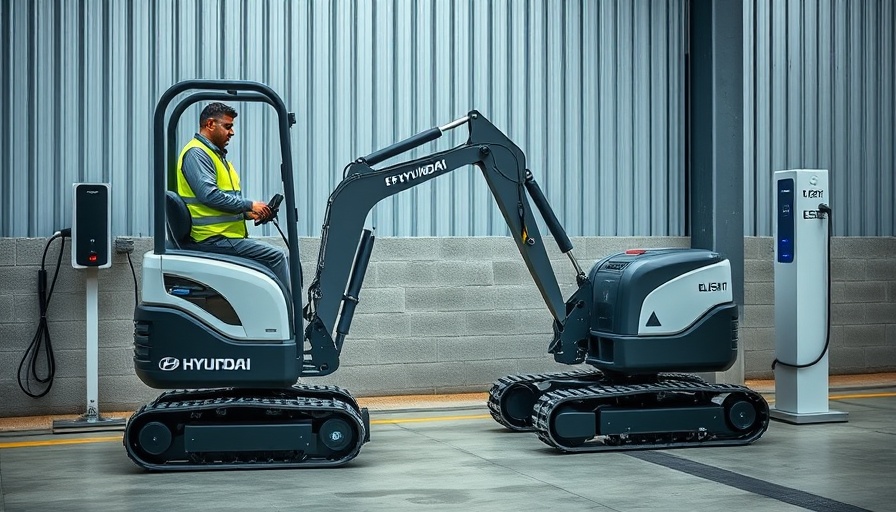
Hyundai Takes a Bold Step into the Electric Construction Space
The construction industry is evolving, and Hyundai Construction Equipment is at the forefront of this transformation with the launch of the HX19e, its first production all-electric mini excavator. Scheduled to debut at the upcoming Bauma trade show, this innovative machinery marks a significant shift towards more sustainable construction practices.
Powerful Performance Meets Eco-Friendly Design
The HX19e, with a weight of 5,061 pounds, is engineered for a variety of tasks including urban utilities, landscaping, and municipal work. With two available lithium-ion battery packs—32kWh and 40kWh—this mini excavator is designed to operate efficiently for nearly seven hours on a full charge. Unlike traditional diesel machines that contribute to pollution, the HX19e offers a cleaner alternative, helping contractors meet regulatory pressures while also addressing growing environmental concerns.
Charging Infrastructure and Operational Efficiency
One of the standout features of the HX19e is its intelligent on-board charging unit, compatible with both 110V and 230V power sources. For quick turnaround, it includes a REMA DIN 320 rapid charging connector that allows for substantial battery recharges in approximately 2–2.5 hours. This adaptability ensures that construction crews can maintain productivity throughout the workday, reflecting a careful consideration of operational demands in the field.
A Glimpse at Performance and Safety Features
Hyundai claims that the HX19e not only matches but, in some cases, surpasses the performance specifications of its diesel counterpart, the HX19A. With a bucket breakout force of 16kN and a dipper arm breakout force of 9.4kN, the electric model is responsive and powerful, making it an attractive option for both experienced operators and new users looking to adopt greener practices. It also includes standard safety features such as safety valves on hydraulic cylinders and LED boom lights, enhancing operational safety.
Understanding the Market Trends and Future Predictions
The introduction of electric excavators like the HX19e highlights an overarching trend within the construction industry towards electrification. As more companies anticipate stricter environmental regulations, the demand for electric machinery is projected to rise. With an increasing number of electric construction options emerging globally, Hyundai is strategically positioning itself as a leader in this vital transition.
Addressing Common Misconceptions
While some contractors may hesitate over electric equipment due to perceived limitations in power or functionality, the HX19e effectively dispels these myths. Its performance metrics alone are poised to endear it to traditional users while also attracting new customer segments concerned about sustainability. Electric machines are not just quieter; they also entail lower service and maintenance costs, a compelling advantage for any contractor.
What This Means for Contractors
For contractors, the arrival of the HX19e represents an opportunity to enhance their operational capabilities while embracing eco-conscious practices. As cities and municipalities increasingly favor low-emission work, adopting electric machinery can thus be a strategic business decision. Keeping pace with equipment advancements can also boost a contractor’s reputation as a forward-thinking entity committed to sustainability.
Conclusion: Get Ready to Embrace Electrification
As the construction landscape shifts, embracing electric excavators becomes imperative for future-ready operations. The Hyundai HX19e is emblematic of this change, demonstrating that sustainability and efficiency can indeed go hand in hand. Explore how this new technology fits into your job site and consider how incorporating electric options can elevate your projects and business.
 Add Row
Add Row  Add
Add 




Write A Comment